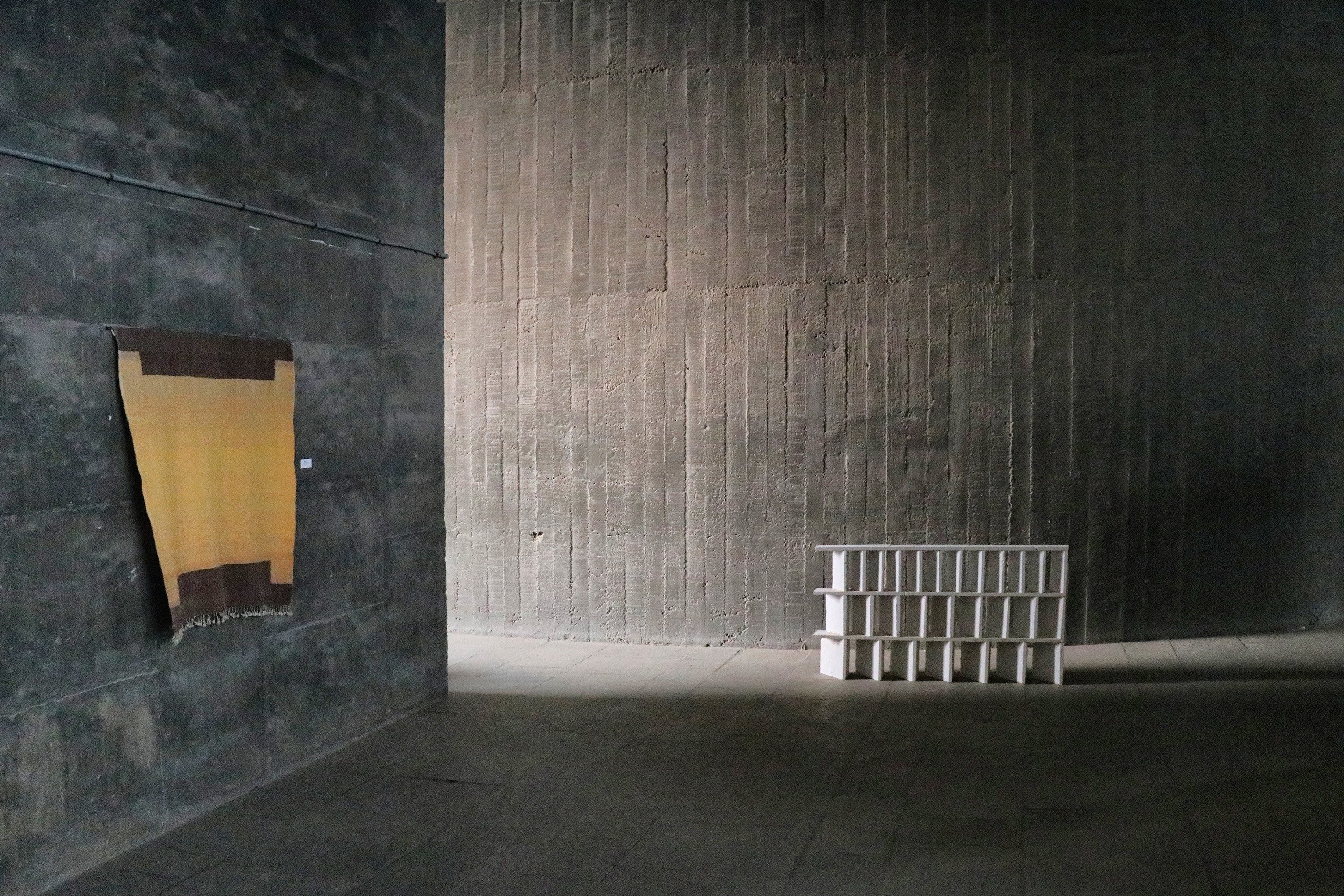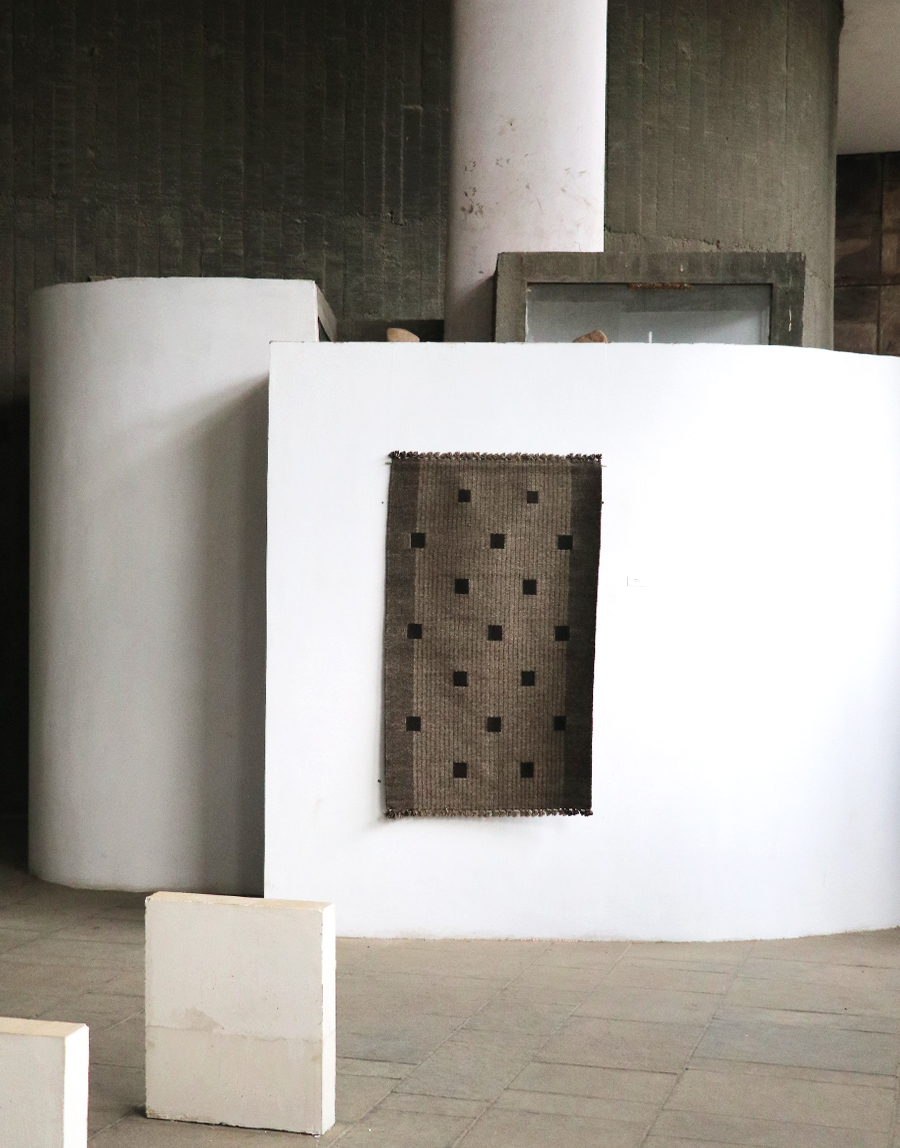Soft Boundaries

Fragment I
Mill Owners’ Gallery, Ahmedabad India
In Collaboration with emerging sculpture artist and architect Jacob Kalinowski and Shamji Vishram Siju of Vankar Vishram Valji.
Through a series of new work, including large-scale woven textile installations, photography and sculptures — Soft Boundaries: Woven Meanings of Chandigarh, materializes the narratives embedded in architecture from the details of the Capitol Complex in Chandigarh, India, to reveal cultural exchanges hidden in the built environment. The work deconstructs the Capitol Complex to explore concepts of change in architecture where cultures intersect, extracting past narratives and new meanings.
The exhibition translates symbolic interpretation of the built forms through weaving and sculpture.Weaving, similar to architecture, is a cultural practice and a physical craft. It embeds stories intophysical form. Gherman uses the density of fibre, structure of woven cloth and surface qualitiesweaving, this project interprets the past architectural narratives of the Capitol Complex and how theintentions exist in the present cultural context of India.
Shamji Vishram Siju, prominent textile artist and master weaver as well as a member of one ofIndia’s most established weaving families, Vankar Vishram Valji, has been working closely withGherman for the past months in Bhujodi at their workshop. The work combines readings of theCapitol Complex with traditional weaving techniques of Kutch. Fragment I (2019) uses extra weftapplications and regional geometric motifs to interpret layers of the buildings into soft, warmhangings that embody the human hand used to construct the monumental works of architecture.
Kalinowski uses the process of casting to capture moments of the building by looking, emptyingwith the negative moulds and filling with fluid plaster to construct traces of human experience at theCapitol Complex. Kalinowski forms the casts in the Mill Owners’ Building over the span of a fewweeks as a resident artist of ATMA, Le Corbusier’s master work in Ahmedabad built after thenotability of Chandigarh. Wall of Shadow (2019) is a study of the monumental pavilion, “Tower ofShadow” built in the capitol complex. The work is a formal exploration that references Corbusier’suse of proportion, shadow, porosity, and texture.
Soft Boundaries: Woven Meanings of Chandigarh is organized by the Mill Owners’ Building and weacknowledge the support of the Canada Council for the Arts.



